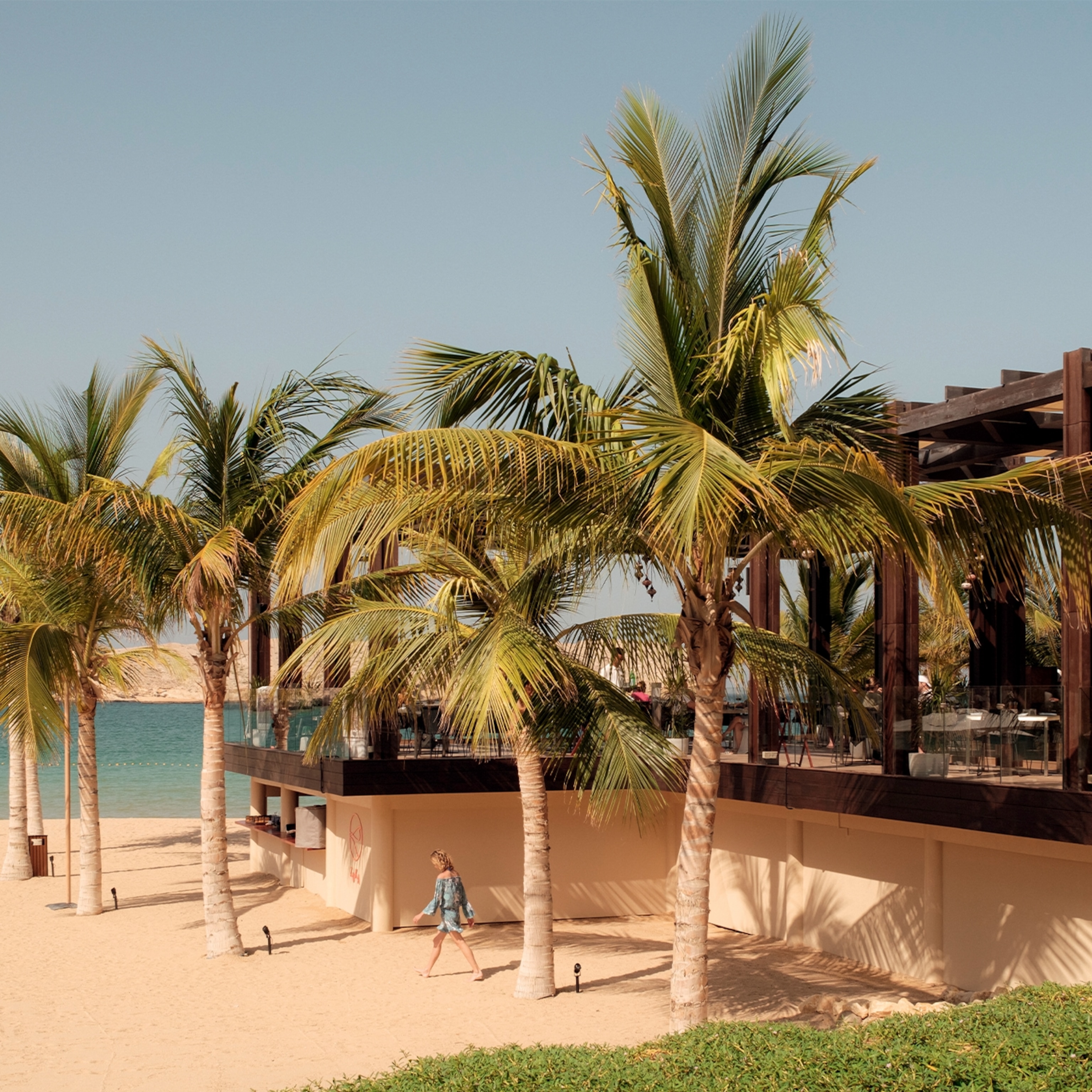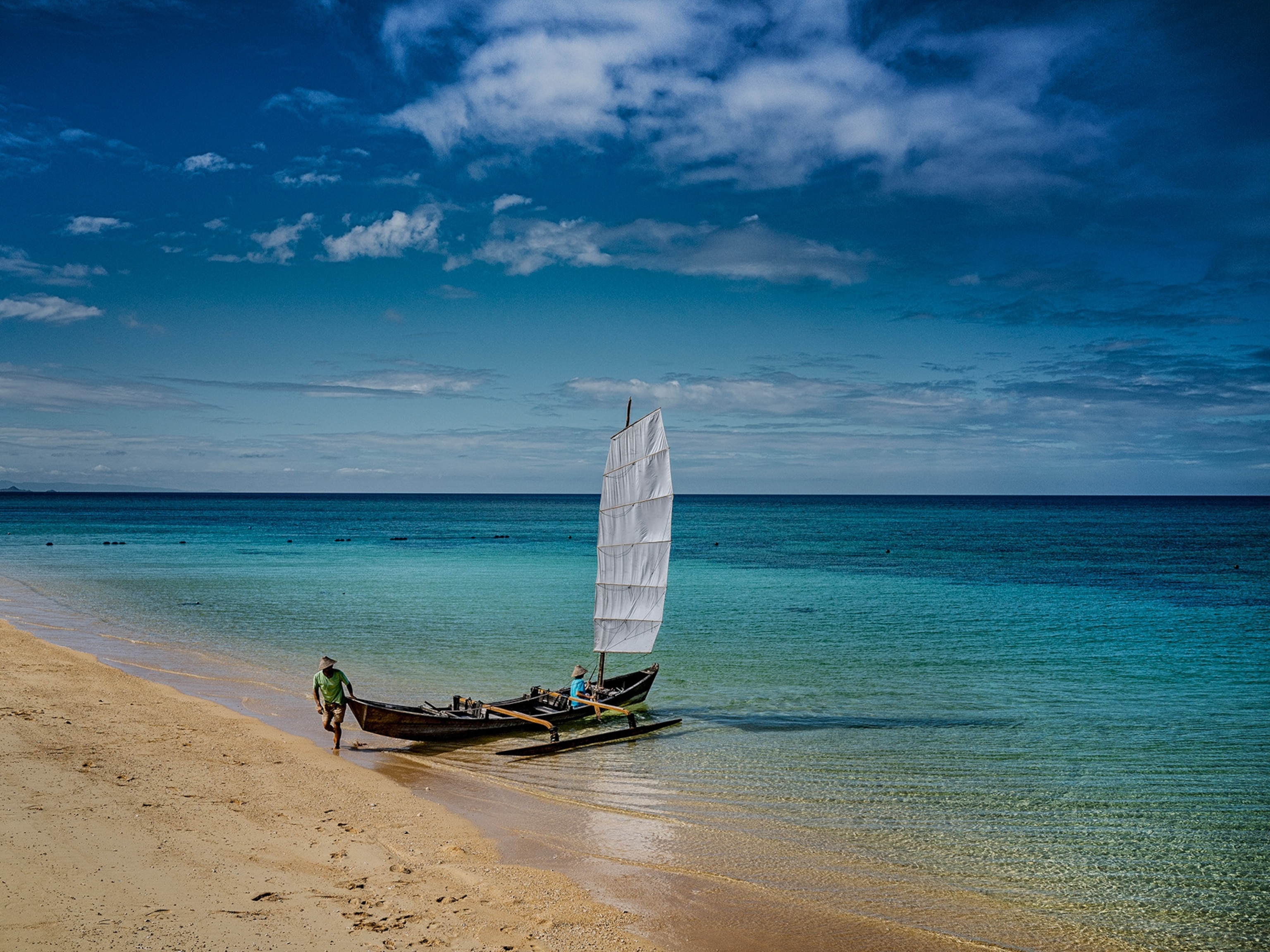
How to explore northern Oman’s most famous sites, from Muscat to the remote Musandam Peninsula
From natural to man-made, Oman has a host of spectacular sites including ancient forts, enormous mosques, and its very own Grand Canyon. This ten-day itinerary includes many of the country’s must-visit attractions.
The following itinerary focuses squarely on the north of the country, using Muscat as a jumping-off point for exploring the mighty Al Hajar Mountains then sailing north to the Musandam Peninsula, separated from the rest of Oman by the UAE. This is a swaggeringly beautiful part of Arabia, where age-old landscapes buckle across the map and savage coastlines rise out of the sea. A trip to Oman is about historical cities, delicate cultural customs and a deep sense of tradition — but it’s also about nature running wild. Pack your adventure gear.
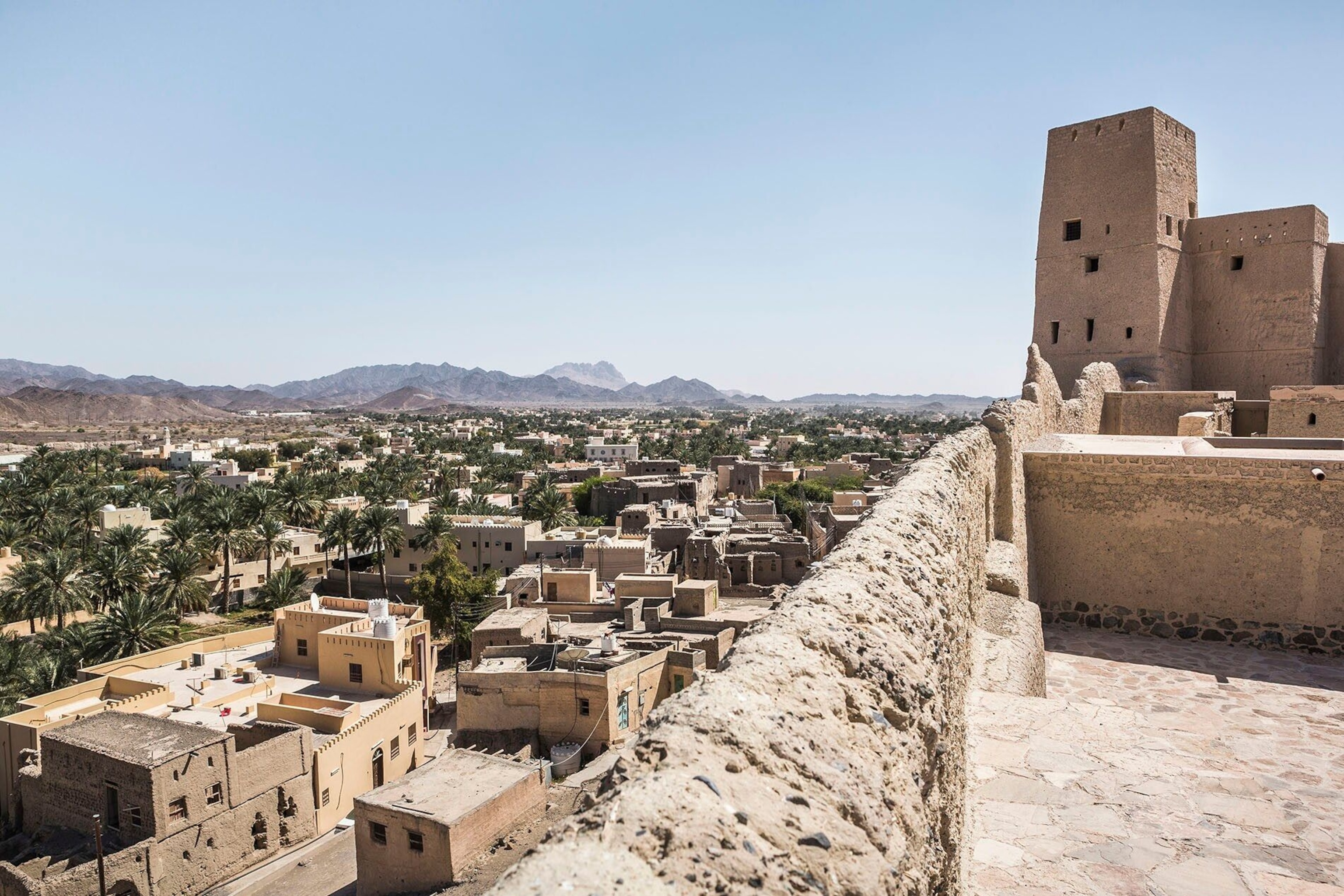
Days 1-2: arrival and Ar Rustaq
From the unrushed coastal capital of Muscat, your likely entry-point into Oman, the Al Hajar Mountains lie directly to the south. They’re not easy to miss. The rusty-red mountain belt serves as a backdrop to the greater urban area, stretching right across the north of the country, even reaching the national border into the UAE. The highest peaks top out at almost 10,000ft (well over twice the height of the UK’s tallest) and loom over deep wadis, creating a fearsomely good setting for outdoor adventure. Ease into your explorations, however, by delving into the past. Stop first at Nakhal, an hour’s drive from Muscat, where a restored fort and some scenic hot springs give good reason to linger, before continuing to Ar Rustaq. The town was the Omani capital for around 150 years, and the fort here is one of the oldest in the country, with pre-Islamic foundations and a labyrinthine spread of towers and passages.
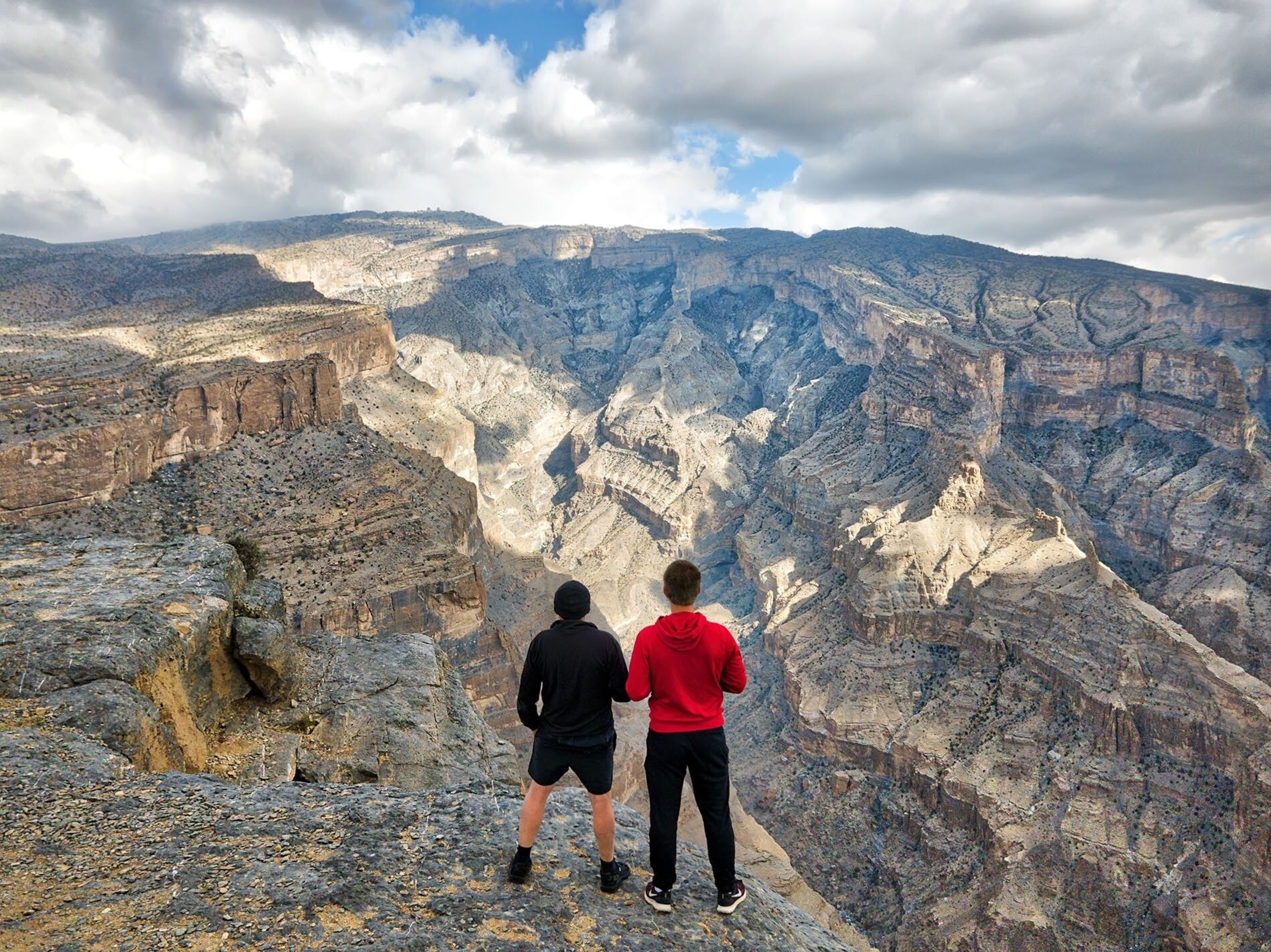
Days 3-4: Jabal Shams and the Omani Grand Canyon
Onwards and upwards. A winding three-hour drive from Rustaq brings you to the deserted mountain village of Ghul, where abandoned houses dot the hillside. From here, the driving becomes a little trickier, so if you’re in your own vehicle a four-wheel-drive is advisable — although bear in mind that various tour companies offer Jabal Shams trips from Muscat. Continuing on past Ghul, you’ll head even deeper into the mountains, where the main attraction is the four-hour, out-and-back hike known as the Balcony Walk. Beginning from the village of Khateem, the hike skirts the rim of the so-called Omani Grand Canyon, serving up arguably the most extraordinary scenery in the entire country: vast chasms of craggy rock and silent valleys. If your luck is in, you might even spot eagles soaring on the thermals overhead. The country’s highest point — the 9,842ft bulk of Jabal Shams itself — looms close by, with superb options for abseiling, via ferrata and summit ascents.
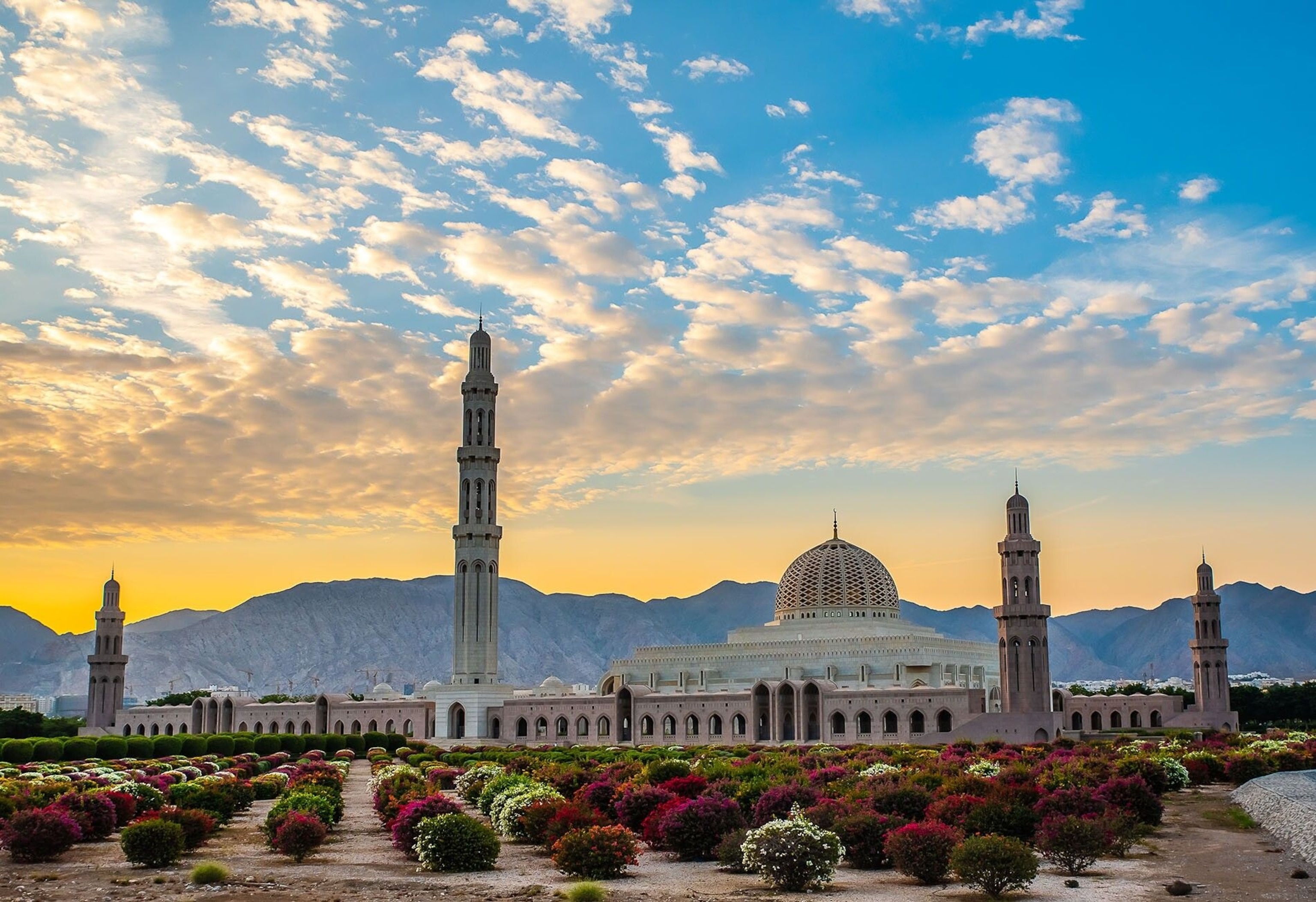
Days 5-7: moving on to Musandam
Drive back to the coast via the oasis city of Nizwa, known for its centuries-old fort and one of Oman’s oldest souks — expect everything from silver and saffron to live goat auctions. The drive back to Muscat via Nizwa takes around two and a half hours. Back in the capital, stay for a day to soak up must-see sights like the Sultan Qaboos Grand Mosque before catching the ferry along the coast to the Musandam Peninsula. You’ll be dropped at the port of Khasab, in the very far north, meaning the voyage treats you to some of the most dramatic coastal scenery in the Gulf before you’ve even disembarked. Musandam’s high-sided inlets, known as khors, draw regular comparisons with the fjords of Norway — unsurprising when you consider that some of the cliffs tower hundreds of metres above the Strait of Hormuz.
Musandam has been dubbed the ‘Norway of Arabia’ for its khors (rocky inlets) and dramatic mountain roads.
Photograph by Getty Images
Days 8-10: making the most of Musandam
Parts of the peninsula are only around 90 miles from the razzle-dazzle of major cities, but the attraction here is all about getting active. From its kayaking, cliff-climbing and mountain safaris to its dolphin-watching, diving and fishing, the Musandam exclave has outdoor potential by the dhow-load. The classic choice is a cruise from Khasab into Khor Ash Sham, the longest and most imposing of the inlets, where mountains soar overhead and isolated hamlets stud the shoreline. Cruises tend to be either half-day or full-day, and on the latter you’re likely to make a lunch stop at Telegraph Island — once home to a British telegraph station — for swimming and snorkelling. The inlet also gives a strong chance of seeing dolphins. Back on land, take a tour in a four-wheel-drive vehicle to Khor Al Najd, one of the few spots along the coast reachable by motorised transport — the views are sensational. There are some upscale hotel options in Musandam, but try to spare at least one night for beach camping, which can be arranged either independently or through local operators. When your time here comes to a close, catch the ferry back down south to the capital city — ideally rounding things off with a slap-up Arabian meal overlooking Old Muscat’s port.
Essentials
Getting there & around
Oman Air flies direct from Heathrow to Muscat International Airport. For the mountain leg of the trip, it’s simple enough to hire a vehicle from Muscat, either from the airport, your hotel or a rental outlet. Alternatively, various operators offer trips similar to those outlined above.
When to go
October to March are the peak months, when much of Oman has a summer-in-the-Med climate.
For more information on the country as a whole, visit experienceoman.om
Follow National Geographic Traveller (UK) on social media
